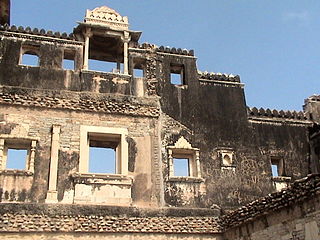Chittorgarh
Chittorgarh is 116 kms. From Udaipur.
Chittorgarh is a city and a municipality in Rajasthan state of western India. It lies on the Berach River, a tributary of the Banas, and is the administrative headquarters of Chittorgarh and a former capital of the Sisodia Dynasty of Mewar. The city of Chittaurgarh is located on the banks of river Gambhiri and Berach. The district was bifurcated and a new district namely Pratap Garh was created with certain portion taken from Udaipur district in the newly created district of Pratap Garh.
Fiercely independent, the fort of Chittor was under siege thrice and each time they fought bravely, thrice Jauhar was committed by the ladies and children, first led by Rani Padmini, and later by Rani Karnavati. The famous warriors Gora and Badal, in the war against Allaudin Khalji (1303 AD), have become legendary. The sacrifice of Rao Jaimal and Patta, two brave army chieftains of Mewar, in the war against the Mughals (1568 AD) was so great that the Mughal Emperor Akbar installed their statues in the fort of Agra. It has also been a land of worship for Meera. Chittorgarh is home to the Chittorgarh Fort, the largest fort in India and Asia.
Places of Interest
Chittorgarh Fort
The Chittorgarh Fort seated on a 180-metre hill, covers an expanse of 700 acres (2.8 km2). It was constructed by the Mauryans in the 7th century AD. There is also a belief that it was constructed by Bhima of the Pancha Pandavas. This fort was the citadel of many great Indian warriors such as Gora, Badal,Rana Kumbha, Maharana Pratap, Jaimal, Patta, eic.
Kalika Mata Temple
Kalika Mata Temple was originally built in the 8th century for Sun God and was later converted to a temple for mother Goddess, Kali in the 14th century.During the festival days of Navaratri, fairs are organised and pilgrims from different places come here to pay obeisance at the temple.
Vijay Stambh
Vijay Stambha, is a huge nine storey tower which was built by Maharana Kumbha to commemorate his victory over the rulers of Malwa and Gujarat in 1440. The tower is 122 ft (37 m) high and stands on a 10 ft (3.0 m) high base. There are sculptures and carvings on the exterior walls of the tower. The tower is visible from any section of the town below. And for reaching tower top one have to climb 157 steps, one can take great view of the surroundings. The inside walls of the tower are carved with images of Gods, weapons, etc.
Kirti Stambh
Kirti Stambh (Tower of Fame) is a 22-metre-high (72 ft) tower built in 12th-century.Kirti Stambh is built inside Chittorgarh fort. It is dedicated to Rishabha, the first Tirthankara of Jainism. It was built by a merchant and is decorated with figures form the Jain pantheon.It is a seven storied pillar which was built by Biherwal Mahajan Sanaya of Digambar Jain sect during 12th century AD. On its four corners are engraved idols of Shri Adinathji in Digambar style which each are five feet (about 1.5meters) high and elsewhere are engraved several small idols consecrated to Jain lineage of deities.
Rana Kumbha’s Palace
Rana Kumbha’s Palace is near the Vijay Stambh. This is the birthplace of Maharana Udai Singh, the founder of Udaipur. His life was saved by the heroic act of the maid Panna Dhay, who replaced her son in place of the prince, with the result that her son was killed by Banbir. She carried the prince away to safety in a fruit basket. Rani Meera Bai also lived in this palace. This is the place where Rani Padmini committed jauhar with the other ladies in one of the underground cellars.
Rani Padmini’s Palace
Rani Padmini’s Palace is from which Alauddin Khilji (one of the rulers of Khilji dynasty during the sultanate rule over India) was allowed to watch a reflection of the Rani by replacing the mirror at such an angle that even if he turned back he could not see the room. Khilji had been warned by the Rani’s husband Rawal Ratan Singh that if he turned back they would cut his neck.
Source : wikipedia


Places Of Interest
Chittorgarh Fort
ChittorgarhShare this:
Chittorgarh Fort Chittorgarh Fort Village, Chittorgarh, Rajasthan 312001 Phone: 094137 91906 This is a World heritage site. Chittorgarh Fort one of the largest forts in India. The fort, popularly known as Chittor, was the capital of Mewar and is today situated in Chittorgarh. It was initially ruled by Guhilot and later by Sisodias, the Suryavanshi … Continue reading Chittorgarh Fort →